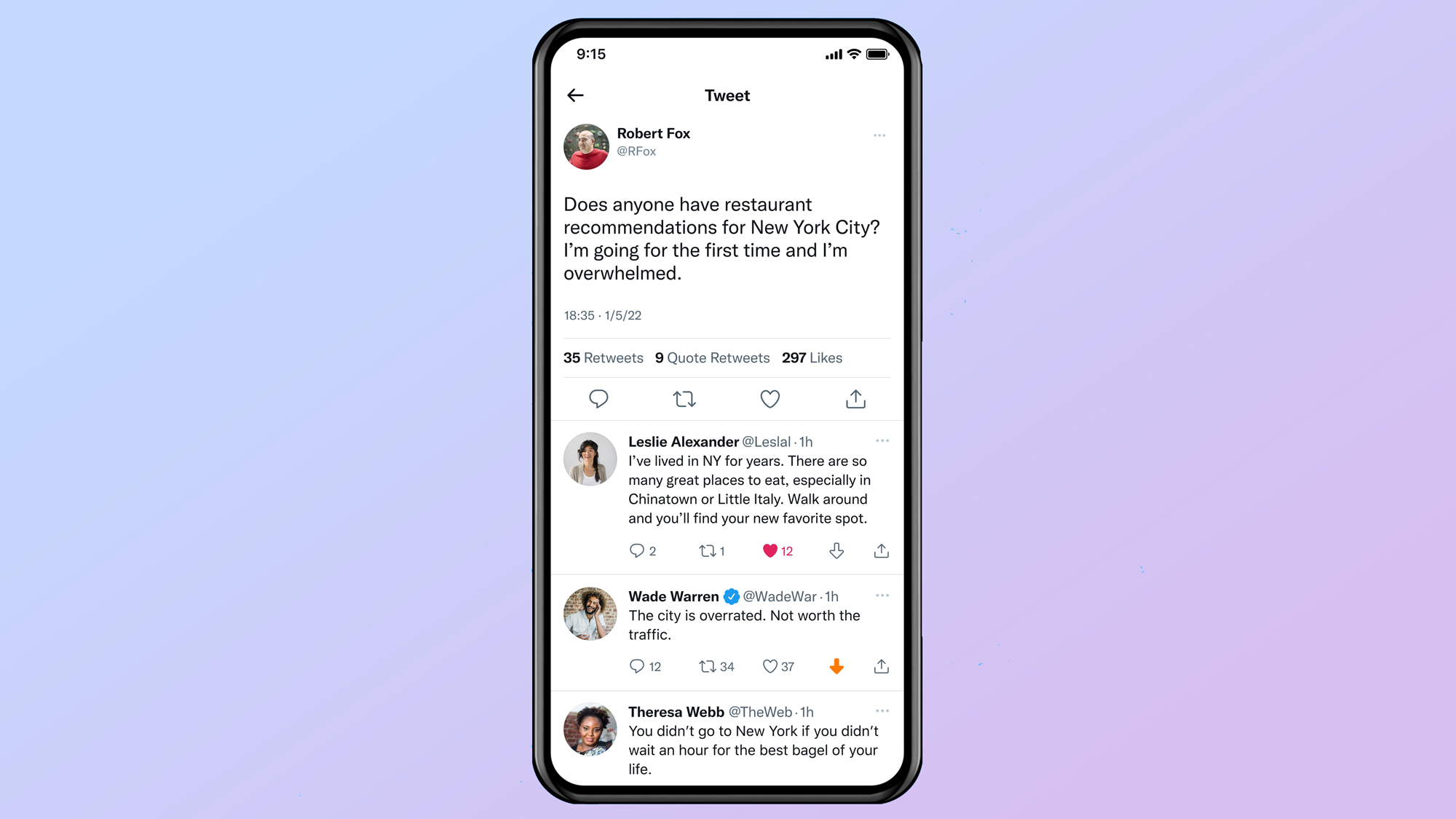Twitter rolls out downvotes for all — what you need to know

Sometimes Twitter can elevate caustic replies over meaningful conversation, but a new downvote feature aims to quell some of that.
Last year Twitter said it was testing a new downvote button with some users, and now the company is sending the feature global. Per a Tweet, Twitter Safety announced the implementation of downvotes and why it's doing so.
"A majority of our users shared that the reason they clicked the down arrow was either because the reply was perceived as offensive, or because they perceived it as not relevant, or both," said Twitter Safety. "This experiment also revealed that downvoting is the most frequently used way for people to flag content they don't want to see."
More importantly, Twitter Safety revealed that, "people who have tested downvoting agree it improves the quality of conversations on Twitter."
Like YouTube, and unlike Reddit, Twitter will not show users the number of downvotes a post receives. The downvote button seems to be purely a backend counting mechanism to help reel in an overactive algorithm. YouTube removed its downvote counter late last year claiming it was causing mental anguish and was being used to harass, although it's possible to see them with a browser extension. Facebook too had experimented with downvotes but opted for emoji reactions instead.
If you can't see the downvote button yet, don't worry. Twitter is still rolling out the feature.

The current Twitter algorithm remains a mystery, but journalists and social media-adjacent companies continue to analyze it to see what the company is changing behind the scenes. Back in 2019, CNN reported that Twitter's algorithm might be inadvertently showing users extreme political content. This could be because social media companies want user engagement, and sometimes the most engaged content happens to also be controversial.
Get instant access to breaking news, the hottest reviews, great deals and helpful tips.
But you might be asking: how could Twitter not know? Well, all these algorithms are based on machine learning, meaning that Twitter is constantly having to analyze its own algorithm to understand what going on. That's why Twitter formed META, the Machine Learning Ethics, Transparency, and Accountability team. It's in contrast to Facebook, which blocked research into its algorithm.
Either way, the curated content per Twitter's algorithm plays a greater role in the "Home" timeline over the "Latest Tweets" timeline. The former shows a curated list of top tweets per the algorithm, where the latter shows tweets in chronological order based on recency. Users can toggle between the two.
"Algorithmic amplification is not problematic by default – all algorithms amplify. Algorithmic amplification is problematic if there is preferential treatment as a function of how the algorithm is constructed versus the interactions people have with it," said Twitter in the blog post linked above. The company went on to say last year it would determine what changes would need to be made to reduce the adverse impacts of amplification on its Home timeline algorithm.
Well, it seems that the downvote button is the solution Twitter is going with. Whether timelines become better remains to be seen.

Imad is currently Senior Google and Internet Culture reporter for CNET, but until recently was News Editor at Tom's Guide. Hailing from Texas, Imad started his journalism career in 2013 and has amassed bylines with the New York Times, the Washington Post, ESPN, Wired and Men's Health Magazine, among others. Outside of work, you can find him sitting blankly in front of a Word document trying desperately to write the first pages of a new book.
